Super Early Deadline
30 November 2025
Judging
Date
24 & 25 March 2026
Winners Announcement
22 April 2026
30 November 2025
24 & 25 March 2026
22 April 2026

The No/Low alcohol space is no longer a fringe trend—it’s a movement reshaping how we approach drinking. Josh Kelly, Buyer at Club Soda finds himself being an "accidental expert." From the bustling Tasting Room on Drury Lane to curating a portfolio of the most exciting alcohol-free products, Kelly has a front-row seat to the sector’s evolution. His journey, beginning with a serendipitous dinner party, has positioned him as a thought leader in a market driven by innovation, sustainability, and shifting consumer habits. We sat down with Kelly to explore the intricacies of the No/Low world, from what defines a great alcohol-free product to the trends set to dominate in the coming years.
I am an accidental No Low expert. Many years ago I sat next to Club Soda founder Laura Willoughby at a dinner party and we became friends. I then volunteered at some early Club Soda projects and gradually took on more responsibilities within the organization until I was working full-time. In that time I’ve been lucky enough to be around as the earliest AF brands were coming to market and Club Soda has worked closely with the brands and their founders giving us a unique insight into the sector. In that time I think I have sampled nearly every new No and Low beverage on its way to market. This makes my role as a buyer for Club Soda a real pleasure.
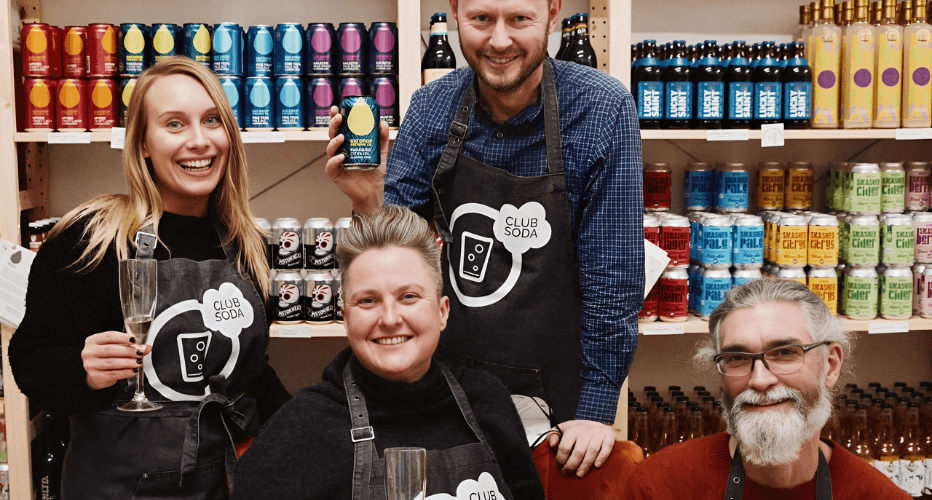
Image: Laura Willoughby, Jussi Tolvi, and Josh Kelly; Source: Club Soda
First and foremost liquid on lips, then price point, bottle size, and design identity.
Any liquid, Ful Alc or Alc Free, has to taste good! At Club Soda, we believe it’s everything in moderation except the flavour. This is our Tasting Room’s USP. If you are on the menu then we can sample you to any customer who walks in the door, which logically leads to sales.
Our consumers are very price-sensitive. Spirits ideally need to come in at under £30, still wines under £14, and beers under £4. I had two excellent wines from the same producer, one at £14 and one at £14.50. The £14 outsold the more expensive bottle by 3-1 on a 50p price difference. We managed to balance out the price difference and as soon as we hit £14 sales zoomed ahead.
Spirits need to be in a 50cl format or smaller. With only one exception, 70cl formats sell through really slowly. There are several reasons for this:
1) Most AF spirits need to be kept in the fridge once they’ve been opened.
2) People don’t want their milk shelf stuffed with AF spirits.
3) Wide-bottomed bottles won’t fit in a fridge.
4) Customers drink AF slower than FA so a 70cl will hang around for ages and consumers worry they won’t get through it.
5) Customers don’t want to carry around a heavy 70cl bottle and what to take a selection of drinks when they visit, a bigger heavy bottle will be left on the shelf as a result.
If you come into our Drury Lane Tasting Room you’ll be blown away by how colourful and exciting the SKUs are. AF have to fight harder to be seen so they generally do an excellent job on the overall look of the format. Botivo is an excellent example of design and identity. It’s always been an incredible drink and we’ve been fans since its earliest inception. However, it took a new shaped bottle, new label, and a funky set of label characters to give its identity which helped it to literally jump off the shelf. It was one of those moments where everything came together and fitted.
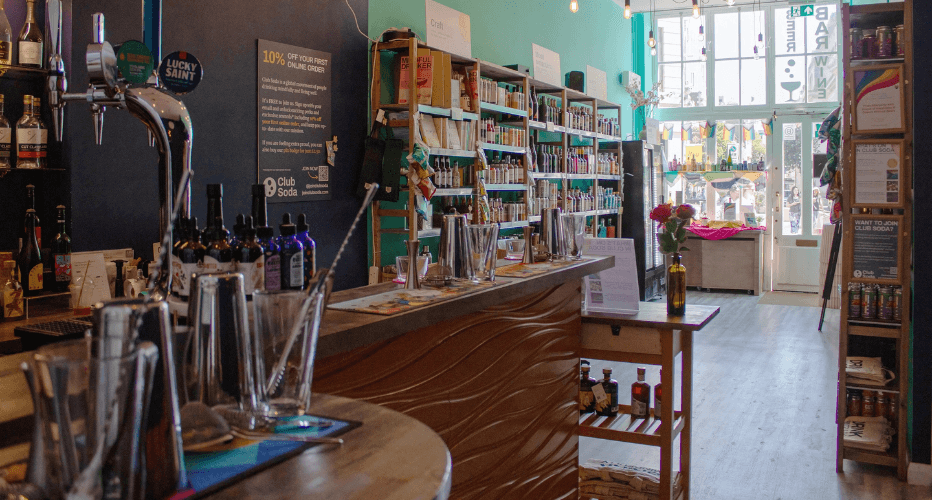
Image: Inside The Club Soda shop.
AF wine has exploded over the last two years and I am seeing more and more exciting and high-quality wines coming into the market. I wouldn’t be surprised if some of the more established producers update their wines to Gen 4 and if the general supermarket offer improves as old contracts lapse and higher quality options take their place.
Functional Drinks are a booming space to watch. Smiling Wolf launched a range of enhanced spirits in Sept 24, there is a new AF caffeine beer about to land, and CBD drinks like GoodRays are gaining a lot of traction. Mushrooms are being increasingly used and I wouldn’t be surprised if Three Spirits brought out a third SKU in their excellent Blurred Vines wine adjacent range.
Low is going to take off in a big way but I think we won’t see it really lift till 2026. 6Percent has a fantastic 6% red on the market with a white due any minute. Nice has a Sauv Blanc and a Merlot at 3.75%, there are more and more excellent 2.8% beers coming to market, and some exquisite 1% - 3% ciders from Cotswold and Sassy. We need to start making a lot more noise about this area of the market as it’s the future for lots of reasons. Club Soda will be hosting a mid-March low abv event at the Shop to hero what is coming through.
Functional Drinks, wines, and pale and fruit beer! The language hasn’t settled yet but Mood Enhancing or Fuctional or Enhanced drinks with neotropics, adepagenics, etc have really strong repeat sales. 2024 was the year older people finally understood CBD and lost their prejudice. The fact that Waitrose now sells CBD is a really important breakthrough and means that the 50+ audience is now buying into CBD.
Generally, we see that AF mirrors FA trends and if you’re not drinking or drinking less alcohol it doesn’t mean that you miss the drink fashions. Now that AF quality is so good, brands don’t back away from following fashion as shown in the popularity of fruit beers like Renegades 0.5% Brewski and Brulo Gose. Amaro moves really well, taking up the slack as the Gin or Clear Spirit sales slow in both FA and AF.
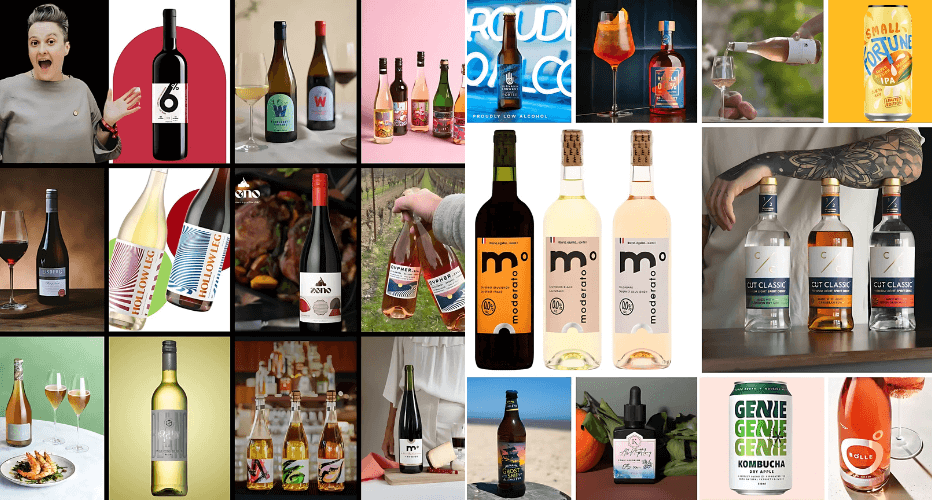
Image: Some Low Alcohol and Alcohol free Offerings at Club Soda.
Making good AF drinks takes a lot more time and effort than FA because you can’t just let the alcohol do the work for you. The most important thing you can do is to invest at the research stage, find the best drinks in your target sector, sample them, and then ask ‘How can I make something at least as good as these?’ It sounds obvious but so many drinks come to market as bog standard, looking pretty, costing more but not touching the market leaders in terms of liquid quality.
We demand the same from AF as FA, so don’t underestimate the customer; they deserve quality and fair price points, not just fancy packaging with celebrity endorsements. Nose, complexity, length, mouthfeel, and finish are what matter, full stop. Over carbonation, thin mouth feel, short finish and a lack of depth are common mistakes. A pet hate of mine is misjudged chili or capsicum use in spirits or RTDs. There is a reaction with carbonation that can provoke a heavy cough reflex for most people, and who wants to start an evening of socialising coughing into your handkerchief when having an AF G&T?
Beer, beer, beer, beer beer! There are so many great AF beers now on the market that the chances are you’ll find a good one and you’re not investing too much money on the way.
Generally, avoid supermarket-own brand AF wines but Asda has had a killer range of own-brand spirits from SOV that have recently done really well at competitions and M&S has some excellent RTD sparkling teas.
However, we have done a lot of the work for you! If you go to our website https://joinclubsoda.com, and click on the HUB you can find hundreds of blogs and podcasts about everything you need to know about No and Low. They are free to access and we even have articles about drinks in Oz and the USA. You can also look at our webshop, you don’t have to buy from us, but we have heaps of information about all the SKUs we work with, so have a read-through, make a list then pop along and see what your local supermarket has and you can buy in confidence. Also, we have launched a range of AF drinks into Majestic Wines so keep an eye out for the Club Soda area and you can buy in confidence.
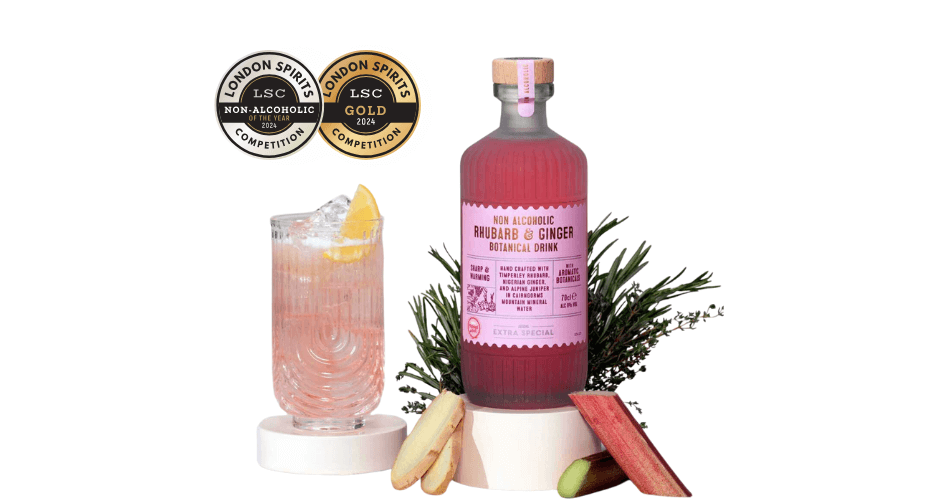
Image: 2024 London Spirits Competition Winner: ASDA Extra Special Rhubarb & Ginger - Non-Alcoholic of the Year.
We always have drinks open to sample at the shop. In fact, if you manage to leave without tasting something we’ve not done our job well. Our staff is incredibly knowledgeable and each sale is consultative with an average shopper spending 25 minutes in-store and the majority ending up joining us at the bar for an AF or Low cocktails, Keg beer, wine, or sparkling tea. Drinking at the bar enables clients to quiz the bar team about what’s going into the drinks, how to mix with AF, and what the most versatile drinks are to invest in. Over Xmas we handed out free hot Eisberg mulled wine as a conversation starter and the shop smelled incredible.
Curation is very important, I can honestly say that the range we carry is top-rate and second to none, and if we do our job right you are going to leave with a perfect drink for you.
Education is the key for both AF and FA. The drinks sector assumes that Joe-Public understands alcohol because it’s so ingrained in our culture, but the truth is that many people are unaware that juniper makes Gin, hops go into beer, and that alcohol is a preservative, flavour carrier, and thickener. If consumers don’t understand Alcohol Full it makes understanding Alcohol-Free or Low even harder. I’ve had people comment at my wine and cheese events at the shop that they’ve learned more from me about wine in general at my AF sessions than they’ve learned at vineyard tastings.
A classic area of ignorance is around sugar. If you take the alcohol out of a beer or wine then the dealc liquid will be at least 50% lower in sugar than the full-strength version because alcohol breaks down into sugar. However, sugar is hidden on FA labels but has to be declared on AF which causes a lot of confusion, especially in wine. In fact, alcohol-free beer is the second most healthy drink you can order in a pub after water! People love that stat and it’s true.
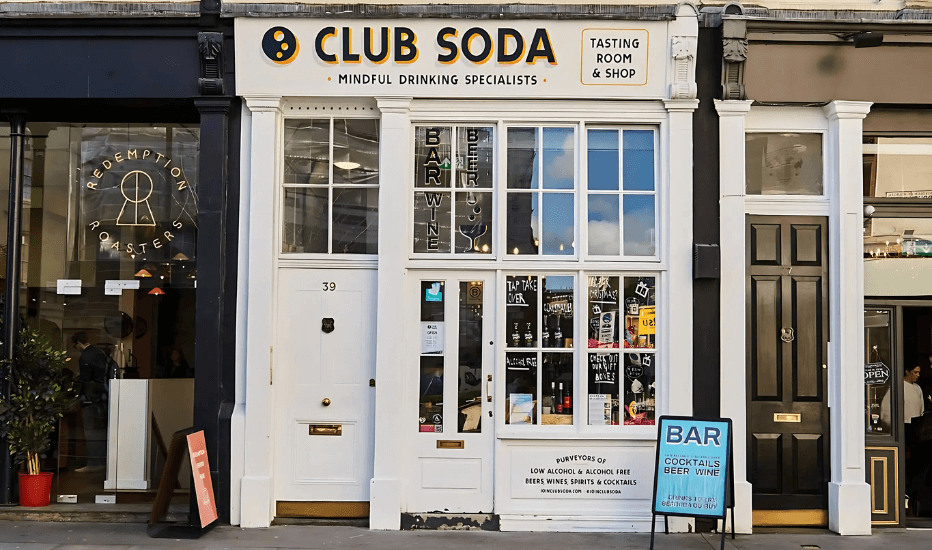
Image: Club Soda Tasting Room & Shop.
People demand more from AF. They want it AF, GF, Low Sugar, Vegan, Low Sulphite, low carbon footprint, and low price. Many brands aim to be BCorp, ethically sourced, 1%, and organic. But legislation makes it harder for them, for example, you may be created from an organic liquid or organic ingredients but if you’ve been de-alcoholised then you are not allowed to use the word Organic even though only heat, pressure, and centrifuge have been used in the process.
There certainly is a lot of interest in local, and people love to know where a drink is from, the founder’s story as well as what goes into it.
However, we need to look at the drinks trade in general and start looking for solutions to some heavy questions such as, why are we flying or sailing millions of gallons of liquid and glass around the globe? Why are we not further ahead with cardboard bottles? Why are recycling options still limited in so many areas?
- Do the research well and take your time on it.
- Can you deliver quality at a consumer-friendly price point?
- Is it worth bringing a budget product to market that’s not amazing? It damages the sector if not
- We don’t need another sparkling rose’ just now. Make a heavy AF still red, it’s what the market is waiting for.
- Be at least as good as the market leader.
- What story are you looking to tell with the branding?
- What is your target audience?
- If you’re a spirit be in a 50cl format.
- Avoid chilli if you can.
- Are the challenges of mouthfeel, thinness, and flavour carriage for a 0.0% worth it not being a 0.5%?
- There is a massive market to develop in the Middle East and the UK market is pretty well saturated.
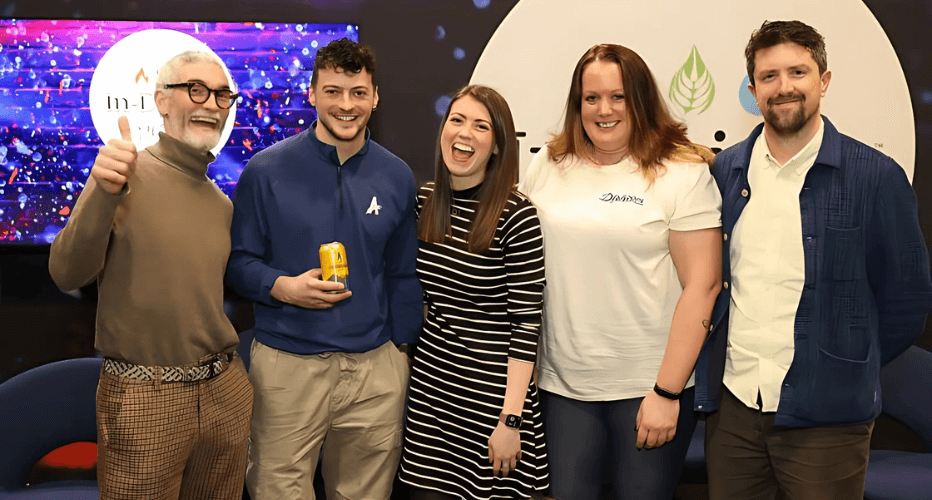
Image: Josh Kelly hosted a panel at In Drinks in Glasgow—source: Linkedin Post.
Saicho Hojoicha is so versatile smokey, oaky, umami, and a little bit scary!
Botivo is so complex, sharp, and sweet, on the rock or with Soda water. It’s just a glorious assault on the senses. Also makes a great white Negroni.
Copenhagen Sparkling Grone 5% sophisticated and exciting on the palate.
Dr Zero Zero’s Amarno, dark black, super bitter, goes for miles and adds depth to any cocktail.
Brulo Gose, saline, subtle fruit notes, hints of vanilla, and a slow sipper. One goes a long way and every sip is a treat.
Smaller and more affordable Dealc equipment is becoming available which is really going to shake things up, especially in the wine sector.
The language hasn’t settled but wine-adjacent, proxy, wine-shaped or wine-alternative drinks are going to start coming much more to prominence on tasting menus. Brands like Feral, Non, Proxi, Blurred Vines, and Muri will be establishing the way with ingredients like Verjus, coffee, lavender, and walnut. As the consumer becomes more confident, better educated, and less risk averse we will see more unique and original profiled liquids doing well in the market.
[[relatedPurchasesItems-63]]
As No/Low alcohol continues to redefine the global beverage industry, voices like Josh Kelly’s are key in driving its growth and authenticity. From championing innovative drinks to educating consumers about their choices, Kelly and Club Soda have become more than curators—they’re advocates for a more thoughtful and inclusive drinking culture. With the Tasting Room offering a haven for exploration and discovery, and an eye firmly on the future, Kelly’s insights remind us that the No/Low movement isn’t just about what’s missing—it’s about what’s being gained: flavor, sustainability, and a new way to raise a glass.
In conversation with Malvika Patel, Editor and VP, Beverage Trade Network
Also Read:
The Rise and Rise of Mindful Drinking: Non-Alcoholic Beverages Take Center Stage
Laura Willoughby MBE, UK’s Top Low & No Alcohol Expert, Joins London Spirits Competition Panel
The Movers and Shakers of London’s No & Low Alcohol Beverage Scene
Show your spirits where it matters. Get your products tasted by top bartenders, buyers and experts at the London Competitions — enter now.